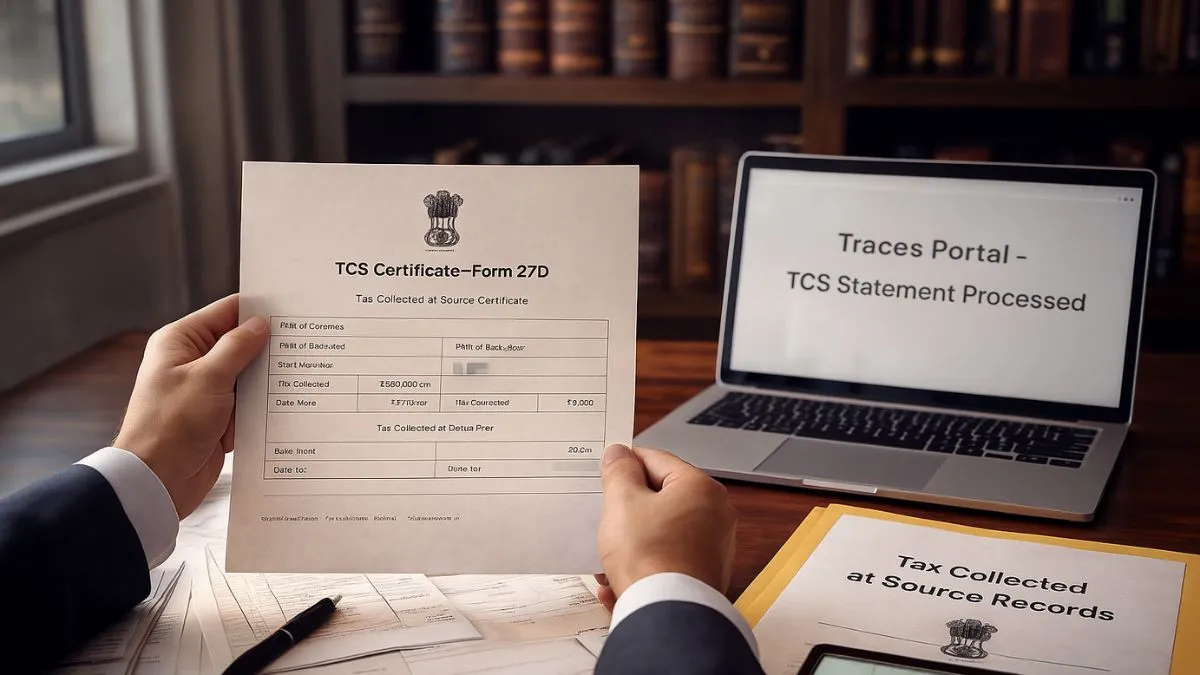
Most people know Atal Pension Yojana as a government-backed social security scheme that promises a fixed monthly pension after the age of 60. But what many taxpayers do not realize is that Atal Pension Yojana (APY) is also eligible for tax deductions under Section 80CCD of the Income Tax Act, 1961.
This one detail often gets missed because people assume only the National Pension System (NPS) qualifies.
But APY is officially treated as a retirement pension scheme under the broader NPS framework, which is why it enjoys the same deduction provisions.
What Is the APY Income Tax Section?
The tax benefits of Atal Pension Yojana flow through Section 80CCD of the Income Tax Act.
This section deals with tax deductions for contributions made towards pension schemes notified by the government — primarily NPS & APY.
So the APY income tax section can be understood as:
→ “Atal Pension Yojana (APY) contributions qualify for tax deductions under Section 80CCD of the Income Tax Act.”
More specifically:
- Section 80CCD(1) applies to contributions made by an individual.
- The deduction limit falls within the overall ₹1.5 lakh limit of Section 80C, 80CCC, 80CCD(1).
- APY does not qualify for an additional deduction under Section 80CCD(1B) because that extra ₹50,000 is for NPS only.
Even though both NPS & APY are pension schemes, the tax treatment has clear differences.
So it helps to understand the logic behind the Act.
Understanding How Section 80CCD Applies to APY
When you enroll in APY, you commit to paying a fixed monthly amount until age 60. These payments are treated as your contribution to a pension scheme.
Under Section 80CCD:
- APY contributions qualify for deductions under Section 80CCD(1)
- This means your APY deposits are treated just like NPS deposits for tax purposes.
- The maximum deduction is subject to the standard 80C limit of ₹1.5 lakh
- This limit is shared with PPF, LIC, tuition fees, ELSS, Sukanya Samriddhi Yojana, & other common tax-saving instruments.
- No extra ₹50,000 under 80CCD(1B)
- This is where people get confused. Although APY is a pension scheme, the additional ₹50,000 is only for NPS Tier-I account holders.
So the rule is straightforward:
APY → Section 80CCD(1) only
NPS → Section 80CCD(1) 80CCD(1B)
Also Read: The Forgotten Tax Benefit for First-Time Investors (Rajiv Gandhi Equity Savings Scheme)
Who Can Claim the APY Income Tax Section Deduction?
Any individual who is:
- A citizen of India
- Between 18 to 40 years
- Making monthly contributions to APY
…can claim the deduction.
It does not matter whether the person is:
- Salaried
- Self-employed
- A freelancer
- A homemaker contributing via spouse
- A worker in unorganized sector
As long as the contribution is being made & the person files an income tax return, the deduction under 80CCD applies.
Example to Understand Tax Deduction for APY
Let’s assume:
- You contribute ₹7,200 per year (₹600 per month) to APY.
- You also invest ₹50,000 in PPF & ₹70,000 in LIC.
Your total eligible tax-saving under Section 80C, 80CCD(1):
- PPF → ₹50,000
- LIC → ₹70,000
- APY → ₹7,200
Total = ₹1,27,200 (eligible for full deduction)
Since all are part of the aggregated limit of ₹1.5 lakh, the entire amount can be claimed.
How APY Fits Into Your Tax Planning Strategy
People often ask — “Should I invest in APY only for tax benefits?”
And the honest answer is: No. The tax benefit is a bonus, not the reason to pick APY.
APY is designed as:
- A guaranteed pension scheme
- For low to moderate income individuals"
- Who prefer fixed returns & stability over market-linked growth
The tax benefit under Section 80CCD strengthens its value, but the real purpose is long-term retirement security.
If your goal is:
- Higher returns
- Flexibility
- Additional ₹50,000 tax deduction
Then NPS might be better.
But if you want guaranteed lifelong pension, APY is unmatched.
Taxation of APY at Maturity
This is another point where people get confused.
✔ Pension received after age 60 is taxable as income: APY follows the same rules as other pension sources.
✔ Lump-sum death benefits to nominee are also taxable: It is treated like income in the hands of the recipient.
✔ No tax exemption on monthly pension: There is no section that provides relief for the pension amount.
So, while the contribution is tax-deductible, the pension is taxable.
Also Read: An Exclusive Tax Benefit for NPS Subscribers
Difference Between APY and NPS Tax Benefit
|
Feature |
APY |
NPS |
|
Section |
80CCD(1) |
80CCD(1), 80CCD(1B) |
|
Extra ₹50,000 allowed? |
❌ No |
✔ Yes |
|
Market-linked growth |
❌ No |
✔ Yes |
|
Guaranteed pension |
✔ Yes |
❌ No |
|
Flexibility |
Low |
High |
|
Max contribution |
Fixed |
Flexible |
This comparison helps you decide which scheme fits your financial goals.
Why Most APY Users Miss Out on Tax Benefits
Some common reasons:
- They believe APY is only for unorganized workers.
- They assume it is not eligible under 80CCD.
- They do not keep track of contributions.
- They do not file income tax returns at all.
If you are contributing even ₹200 or ₹500 a month, you should still claim the deduction. Every rupee matters in retirement planning.
Documents Required to Claim APY Tax Deduction
To claim your APY deduction under Section 80CCD:
- Bank statement showing monthly APY auto-debit
- APY account statement (can be downloaded from NSDL site)
- Contribution summary issued annually
- Proof of income & filing ITR
There is no separate certificate like Form 16A or 80CCD certificate. Your bank statement is the primary proof.
Common Mistakes While Claiming APY Deductions
- Claiming the wrong section (e.g., selecting 80C instead of 80CCD)
- Assuming APY is eligible for the extra ₹50,000 under 80CCD(1B)"
- Forgetting to add APY while calculating total tax-saving investments
- Not considering future income (APY pension is taxable)
If you are investing only in APY, you might miss the opportunity to optimize your full ₹1.5 lakh limit.
It is better to combine APY with PPF, ELSS, SSY, or NPS depending on your goals.
Also Read: Stamp Duty Exemption in Income Tax under Section 80C
Is APY Worth It Only for Tax Benefit?
Tax saving is always helpful, but APY should be chosen for:
- Stability
- Guaranteed monthly income after retirement
- Government-backed safety
- Predictable lifestyle after 60
- Security for spouse/nominee
The tax benefit is an add-on that strengthens the case for APY.
Final Thoughts
APY is one of the simplest and safest pension schemes available in India. Yet many people do not know that Atal Pension Yojana (APY) is eligible for tax deductions under Section 80CCD, putting it in the same category as NPS contributions. While the deduction is limited to the overall ₹1.5 lakh limit and does not receive the additional ₹50,000 benefit like NPS, APY still plays a strong role in long-term financial stability — especially for people who want predictable retirement income.
If you have been contributing to APY & not claiming deductions, start claiming it now. It’s your money — keep more of it with yourself.
If you want a clean, confusion-free tax filing experience — or want to understand how APY, NPS, ELSS, PPF, SSY, and other deductions fit into your overall tax plan — you can always take expert help.
Check out Callmyca.com, where real CAs simplify your taxes & help you save more without stress.










